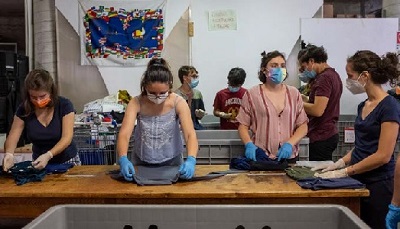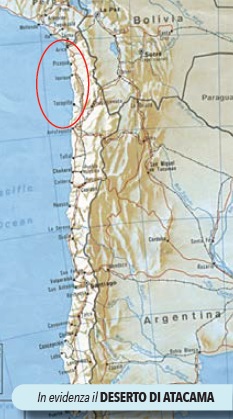Trash fashion
Publish date 25-05-2022
 The images have traveled around the world. Mountains of T-shirts, skirts and trousers flood the Atacama Desert in northern Chile.
The images have traveled around the world. Mountains of T-shirts, skirts and trousers flood the Atacama Desert in northern Chile.
Officially they do not exist. Yet they are there for all to see.
How did they get there? Who brought them? For what reason? Where did they come from? The answer to this last question is as dry as it is shocking: from our wardrobes. Or, better still, from the bins that fill up when we empty them.
Atacama runs out of tens of thousands of clothes produced in a continuous cycle in Asian factories. And resold at bargain prices in stores in the United States, Europe and Canada. Poor quality stuff that shoppers wear for a season and then prefer to throw away rather than mend. Buying a new “made in China” or “made in Bangladesh” product costs less. Old clothes are labeled as "second hand" and taken where they can still be sold or, if not, discarded without too many formalities. It is the "hit and run" fashion circuit, one of the most polluting sectors for the planet: it produces 8% of harmful emissions and consumes a fifth of the world's water reserves. In addition to discharging 500,000 tons of synthetic fibers a year into the oceans. And generate waste after waste, as three-fifths of the clothes produced are thrown away after a year.
For disposal, countries are sought in which the contradictions of the global economy find a favorable legal framework. Like Chile. Unlike the rest of the continent which prohibits it for health reasons or for the protection of local companies, the southern nation, along with Guatemala, is the only one to import used stuff in large quantities. In 2021, 59,000 tons passed through the port of Iquique alone. The latter is the main gateway to textiles in Latin America and overlooks the Atacama desert, which has become the cemetery of world fashion in recent years.
Over two thirds of the clothes arriving at the airport remain unsold. It's not a casuality. Much of the goods that arrive are ruined. The importing companies know this. But they also know that if they accept it, they will get good clothes at a bargain price from companies in the North of the world, eager to dump their waste elsewhere. So much is the Atacama black hole.
Legal landfills do not accept clothes, according to decree 189 of the Ministry of Health, because they are harmful to the soil. The authorities, however, turn a blind eye - or both - when they are abandoned, at night, often changing the point so as not to be discovered, where you can pretend not to see them. Thus, Atacama became the perfect “open-air hiding place”.
 According to the Secretariat for the Environment, there are at least 45 clandestine unloading points throughout the desert. In the one between Iquique and Alto Hospicio alone, at least 500,000 tons of clothes would have accumulated. And others are being added, month after month. An amount such as to lead Atacama to undermine the primacy of the other maxi-trash can of fashion in the world: the outskirts of Accra, in Ghana.
According to the Secretariat for the Environment, there are at least 45 clandestine unloading points throughout the desert. In the one between Iquique and Alto Hospicio alone, at least 500,000 tons of clothes would have accumulated. And others are being added, month after month. An amount such as to lead Atacama to undermine the primacy of the other maxi-trash can of fashion in the world: the outskirts of Accra, in Ghana.
These "cemeteries of clothes" are the uncomfortable face of "hit and run fashion" or "fast fashion" which has now become "trash fashion". The UN had already raised the alarm two years ago: the manufacture of clothes doubled between 2000 and 2014. For various experts, this is due to the progressive lowering of production costs due to the increase in the exploitation of labor, as the tragedy of the Rana Plaza in Bangladesh had tragically proved. And to the use of increasingly poor materials and, consequently, harmful to nature.
Now, however, something could change in Chile. After years of mobilizing public opinion and complaining from activists, last September, parliament decided to amend the recycling law and include textiles among the "priority goods", the disposal of which is the responsibility of the manufacturing or importing company. The quantities purchased must be strictly certified like waste, such as for plastic and metal. Otherwise, companies will have to pay hefty fines which will make it cheaper for them to discard their clothes by secretly throwing them into the desert, trying to evade controls. The new measure will be applied starting from 2023 with the aim of stimulating the recycling of fabrics by manufacturers, the only, authentic antidote to "fast and trash fashion".
Lucia Capuzzi
NP February 2022







